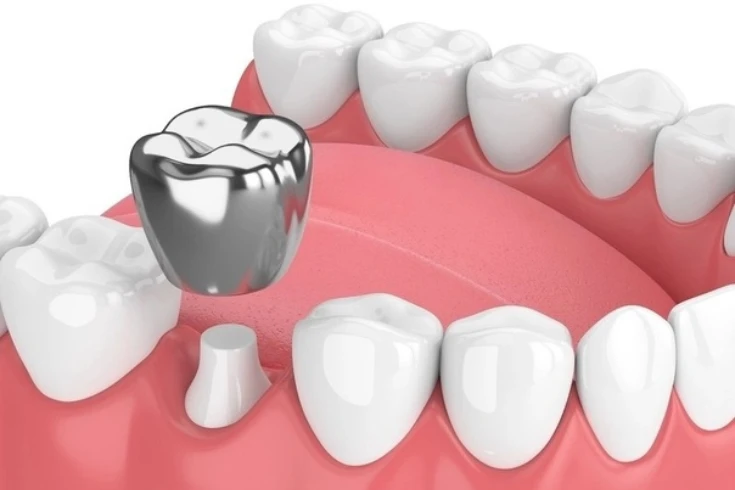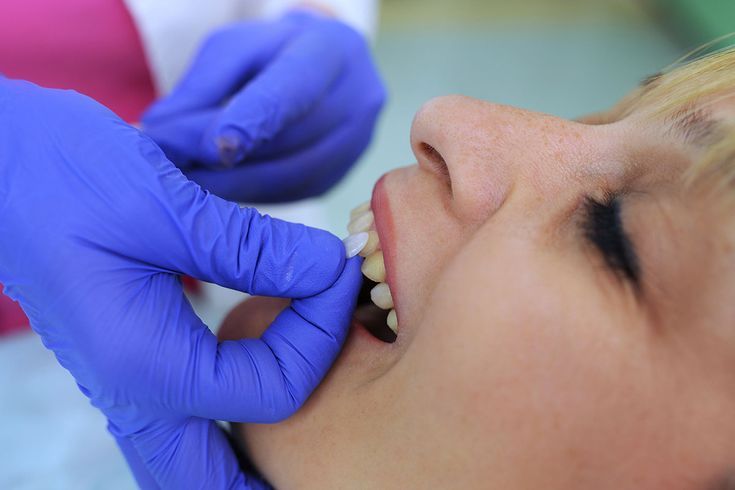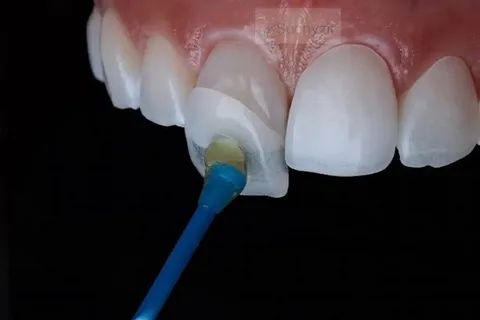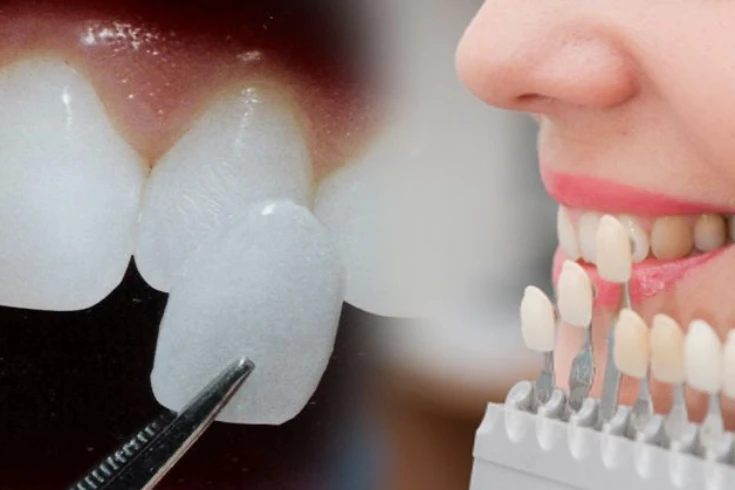Dental health and aesthetics are two big reasons why a lot of people find themselves in need of a solution that can protect the teeth or improve their look. A front tooth cap is one of the most common dental treatments. In this blog, we will be discussing all that one needs to know related to getting a cap on the front tooth, types of caps available, the procedures, benefits, and costs, aftercare tips, and so on.
Introduction to Front Tooth Caps.
A front tooth cap or a dental crown refers to a restoration covering or “capping” a tooth damaged or decayed. The caps are more important in the front teeth, given that they highly expose the tooth and are contributing to one’s smile and facial outlook. A cap on a front tooth will only restore the function but improve the tooth’s appearance, giving it a look of healthiness and naturalness.
Caps or crowns are typically made of various kinds of materials and can be designed to assimilate the color and shape of your natural teeth so that they are undistinguishable in your smile. The reason one would might need a front tooth crown is when the tooth has become extensively weakened, seriously discolored, chipped, or broken.
Why Do You Need a Cap on Your Front Tooth?
There may be several reasons as to why you need a cap on your front tooth. The most common reasons include,
- Damage or Injury: Sports, accidents and falls remain the most common causes of injuries to front teeth. If your tooth is chipped or cracked, a cap can help in protecting the remaining tooth structure and provide it with a nice, aesthetically pleasing look.
- Tooth decay: In the presence of extensive decay, a cap can be fitted to provide tooth support and prevent further damage.
- Discoloration: Sometimes discoloration may be too extreme to correct with professional whitening treatments. The cap on the front tooth may unify or even out the color.
- Wear and tear: The teeth wear down over time, mainly if you grind your teeth, this is commonly referred to as bruxism, the cap on the front tooth protects your tooth and helps to restore the tooth natural shape.
- Root Canal Treatment: The tooth might become brittle after a root canal treatment; hence, it may need front teeth crowns that could help strengthen the tooth and protect it.
Types of Front Tooth Caps
Selection of appropriate cap on front tooth is equally important to have your tooth functionally and aesthetically sound. Following are the types of cap on front tooth materials:
- Porcelain Crowns: Most preferred for the front teeth since they would offer the most natural look. Porcelain replicates the translucency and color of natural teeth. Also, one can barely notice that a cap front tooth is in place.
- Ceramic Crowns: Just like porcelain, the ceramic crowns are effective for aesthetic purposes. They are durable and will perfectly blend into your natural teeth.
- PFM Crowns: These caps combine the strength of metal with the natural look of porcelain. While durable, the metal sometimes can show through the porcelain; thus, they are not as ideal for front teeth.
- Metal Crowns: Although barely used on front teeth because of its look, all-metal crowns are the strongest. These are often used for molars but can be a good option when durability is of essence.
- Zirconia Crowns: Zirconia is a fairly new material that offers strength much like a metal. But with much better aesthetic appearance. It’s often used when there is a need for capping on the front tooth, where both the look and durability are a priority.
The Procedure of Capping a Front Tooth
Capping of a front tooth generally involves a few steps and may require two dental visits. Here’s what you can expect during the procedure:
- Consultation and Examination: First, your dentist will assess the status of the tooth. He or she will perform an X-ray assessment to see the extent of the damage. They will also be discussing your options for a cap and will help you decide on the best material for your needs.
- Tooth Preparation: Your dentist will shave off a small portion of the tooth, allowing it to make room for the cap. This is necessary so that the cap on front tooth will fit properly.
- Impression and Temporary Cap: After the tooth is prepared, your dentist will take an impression of the tooth. This is then sent to a dental lab for the making of your new custom-made cap front tooth. Meanwhile, a temporary cap is placed over your tooth.
- Fitting the Permanent Cap: Once your crown is prepared, you will go to see your dentist to fit it. The color and fitting of the cap front tooth will also be inspected by your dentist before he cements it permanently.
How to Choose the Right Cap
There are various things to consider while selecting the best cap on a front tooth.
- Durability: Porcelain and ceramic caps are more natural in appearance. But they are not quite as durable as those with a metal base. Talk to your dentist about your lifestyle and your needs. Accordingly make a decision on what will work best for you in terms of aesthetics versus durability.
- Appearance: In the case of your front teeth, you would want a cap that resembles the color and shape of all your other teeth as much as possible. Porcelain and ceramic caps are normally the best options when trying to obtain a natural look and appearance.
- Cost: It is difficult to ascertain the exact cost of a cap on front tooth as prices vary per material. Among the options, metal caps are the cheapest of all. The dentist does not recommended it for front teeth as these are artificial-looking and visible.
Benefits of Front Tooth Caps
A cap on front tooth has numerous benefits, such as:
- Protection: A cap placed on a front tooth serves to protect the weak tooth from further damages or decays.
- Aesthetic Enhancement: When front teeth are discolored or misshapen, capping the front tooth does much to improve the appearance of the smile.
- Functional: A well-designed cap on a front tooth reinstates an individual’s ability to comfortably bite and chew food without discomfort.
- Longevity: If adequately cared for, a front tooth cap can last for several years and thus offer long-term protection with the aesthetic enhancement.
Front Tooth Cap vs. Other Dental Solutions
When it comes to restoring front teeth, one of many options includes a cap front tooth. Other treatments include:
- Veneers: Thin shells that cover the front of a tooth. While veneers may work great for cosmetic purposes, they do not offer protection the same way that a cap on front tooth does.
- Bonding: The dentist will apply a toot-colored resin over the severely damaged teeth for the dental boding. As compared to the cap front tooth, bonding is less expensive but also less durable.
Cost of the Front Tooth Cap
The cost of a cap on could vary based on different materials and location as well as the dentist’s experience. Average cost that you could anticipate paying is
- Porcelain or Ceramic Crowns: $800 – $2,000 per tooth
- Partial Crowns: $600 – $1,800 per tooth
- Metal Crowns: $500 – $1,500 per tooth
If you require front tooth cap insurance will also cover a part of the crown cost.
How to Care for Your Tooth Cap
Taking proper care for your cap front tooth will help to extend the life of the cap. Here are some ways you can maintain your cap:
- Brush and Floss as Usual: Treat your cap on front tooth like any other tooth. Therefore, brush it twice a day and floss once a day to prevent plaque.
- Avoid Chewing Hard Objects: In that way, you will prevent cracking or chipping of the cap on a front tooth. The examples of hard foods are ice and hard candy.
- Regular Dental Visits: Pay regular visits to your dentist in order to prevent wearing out of your tooth cap.
Possible Risks and Side Effects
Though the process is harmless, there are some potential risks and side effects as a result of the process of capping a front tooth. These can be summarized below:
- Sensitivity: The sensitivity to hot or cold being felt after the capping of the front tooth.
- Chipping: Dentists suggest that over time, the porcelain caps chip a lot more than anything else.
- Loose Caps: A number of times, tooth becomes loose or falls off and thus one needs to replace it by visiting the dentist.
Conclusion
A cap on a front tooth is an excellent way to save a damaged tooth from further inroads of disease, while enabling an improvement in the aesthetics of your smile and helping restore the function of your front tooth. Whatever the reasons-injury, decay, or cosmetic concern-the right cap on the front tooth will make a great difference in your dental health and overall confidence. Be sure to consult with your dentist regarding the best material and procedure for your needs. Your tooth cap will continue, with proper care, to serve you for years to come, protecting and cosmetically enhancing your smile and giving you that healthy, beautiful smile you deserve.
FAQ’s
- Can I eat normally with a cap on my front tooth?
Yes, you can eat normally with a cap front tooth. However, it is recommended to avoid biting directly into hard or sticky foods, especially during the initial period after getting your crown, to prevent damage. - What are the alternatives to a front tooth cap?
Alternatives to a front tooth cap include dental bonding, veneers, or fillings, depending on the condition of your tooth. However, these options may not provide the same level of protection and durability as a crown. - How do I know which type of front tooth cap is best for me?
Your dentist will recommend the best type of cap on front tooth based on factors like the condition of your tooth, your aesthetic preferences, and your budget. Porcelain and ceramic crowns are usually recommended for front teeth due to their natural appearance. - Can I get a cap on a front tooth that has had a root canal?
Yes, it is common to place a front tooth cap after a root canal treatment. A cap helps protect the tooth, which can become more fragile after the procedure. - How do I maintain the appearance of my front tooth cap?
To keep your front tooth cap looking good, maintain proper oral hygiene, avoid staining foods and beverages like coffee and red wine, and visit your dentist regularly for cleanings and checkups.





